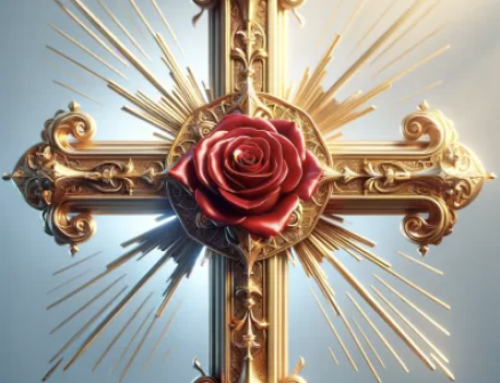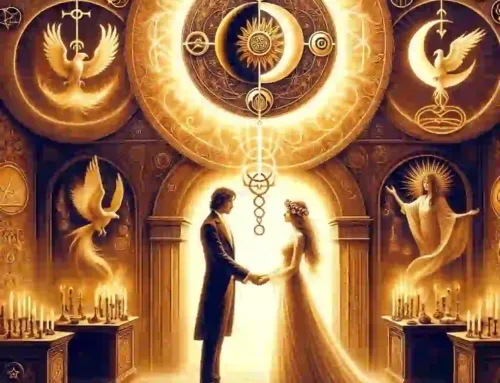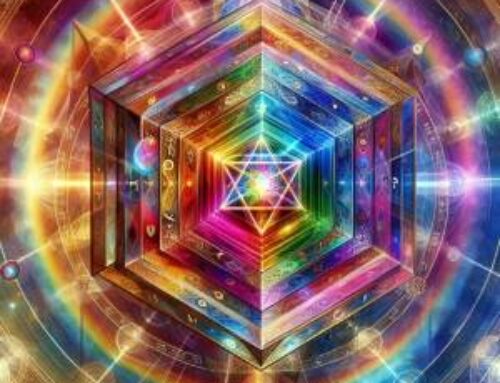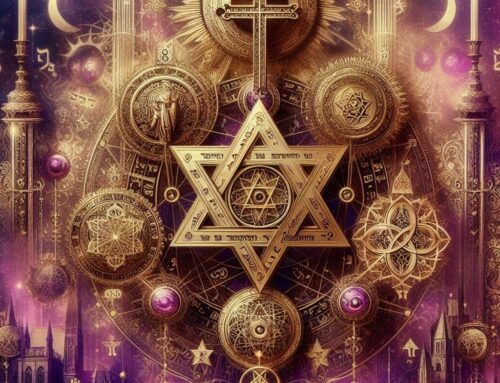Contents
- 1 Introduction
- 2 The Foundations of the Golden Dawn
- 3 The Challenge of Syncretic Systems
- 4 The Quest for an Authentic Initiatory Experience
- 5 The Pursuit of Authenticity in Mystical Orders
- 6 The Esoteric Order of the Golden Dawn’s Syncretic Challenge
- 7 Initiation and Pedagogy: A Comparative Analysis
- 8 Cultural Integration vs. Appropriation
- 9 Evolution of Esoteric Orders in Europe
- 10 Lower Mysteries vs. Higher Mysteries
- 11 Conclusion
- 12 FAQ – Esoteric Order of the Golden Dawn
- 12.1 1. What was the Esoteric Order of the Golden Dawn?
- 12.2 2. Why did the Golden Dawn synthesize various mystical traditions?
- 12.3 3. What led to the dissolution of the Golden Dawn?
- 12.4 4. Can modern organizations truly claim lineage from the Golden Dawn?
- 12.5 5. What is the significance of the higher mysteries and the Rosicrucian grades in the Golden Dawn?
- 12.6 6. How can I start my initiatory journey?
- 13 References:
Introduction
In the twilight of the 19th century, amidst the fervent quest for spiritual knowledge and the resurgence of occult interest, the Esoteric Order of the Golden Dawn emerged as a beacon of Western mysticism. Founded with the intent of providing a structured path towards spiritual enlightenment, the Order drew upon elements of Hermeticism, Kabbalah, alchemy, and the Tarot to construct a comprehensive framework of esoteric study and practice. Its influence on Western occult traditions was profound, nurturing some of the era’s most notable mystics and magicians. Yet, as with all luminary entities, the (Hermetic Order of the) Golden Dawn was not immune to the internal strife and doctrinal disputes that ultimately led to its dissolution in the early 20th century.
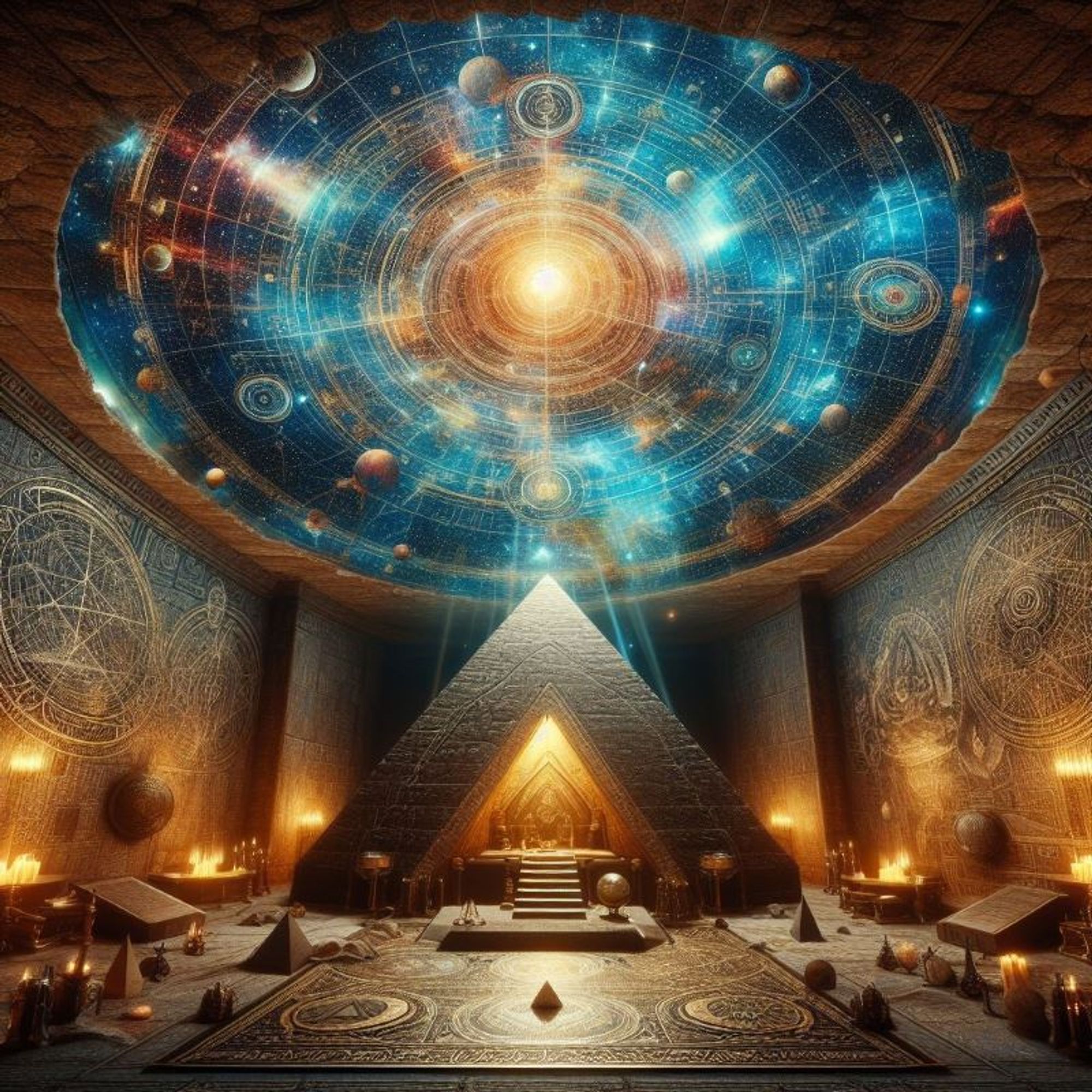
Today, many organizations claim lineage from this original conclave, yet they diverge significantly from its foundational teachings, often propagating doctrines that the founders of the Order might scarcely recognize. This has left seekers of genuine esoteric wisdom navigating a labyrinth of authenticity, striving to discern the original teachings from modern interpretations that are frequently imbalanced or errant. In acknowledging this complex legacy, we delve into the history, the original doctrines, and the indelible impact of the Esoteric Order of the Golden Dawn, aiming to illuminate the path for those seeking to tread the fine line between historical reverence and contemporary practice in their quest for spiritual truth.
The Foundations of the Golden Dawn
The Esoteric Order of the Golden Dawn, emerging in the late 19th century, was a crucible of mystical, philosophical, and magical traditions. It sought to harmonize the fragmented wisdom of antiquity, drawing heavily upon the rich soils of Hermeticism, the intricate branches of the Kabbalah, and the transformative practices of ceremonial magic. This synthesis aimed not just to enlighten the mind but to forge a path for the soul’s ascension through the planes of existence.
Roots in Hermeticism
Hermeticism, with its philosophical and spiritual teachings attributed to Hermes Trismegistus, provided the Golden Dawn with principles that spoke of the universe’s mental nature and the power of human thought. “As above, so below; as within, so without” became not just a maxim but a guiding star for magical practice, illustrating the interconnectedness of the cosmos and the individual.
Influence of Kabbalah
The Kabbalistic Tree of Life, with its sephiroth and paths, served as a map for the Golden Dawn’s initiatory journey. This mystical framework enriched the order’s rituals and teachings, offering a structured approach to understanding the divine architecture of the universe and the soul’s place within it. The order adapted Kabbalistic concepts to fit its overarching system, seeking to make these ancient teachings accessible to the Western mind (1).
Ceremonial Magic
Ceremonial magic, with its elaborate rituals, invocations, and symbols, was the heartbeat of the Golden Dawn’s practice.
These rituals were designed to align the magician’s will with divine forces, enabling transformative experiences and the acquisition of deeper knowledge.
The use of Tarot, geomancy, and astrological correspondences within these ceremonies bridged the tangible and the transcendent, offering a tangible means to explore the ineffable.
Historical Significance
The historical significance of the Esoteric Order of the Golden Dawn cannot be overstated. It acted as a nexus for esoteric knowledge, attracting figures whose works would ripple through time. However, its legacy is also a tale of human ambition, conflict, and the fragility of secrecy. The order’s eventual dissolution in the early 20th century left a vacuum filled by successors and pretenders alike, each claiming lineage or inspiration from the original teachings.
Modern Interpretations and Imitations
In the contemporary esoteric landscape, the name ” Esoteric Order of the Golden Dawn” is both a badge of mystical authority and a contested legacy. The proliferation of groups bearing the name, each with its own interpretation of the order’s teachings, presents a challenge to those seeking authentic spiritual lineage. Amid this confusion, the original Golden Dawn’s foundational principles — Hermeticism, Kabbalah, and ceremonial magic — remain beacons for those seeking the light of truth in a fragmented world.
The Challenge of Syncretic Systems
The Esoteric Order of the Golden Dawn ventured to construct a spiritual path by amalgamating elements from divergent traditions such as Hermeticism, the Kabbalah, astrology, and elements of Egyptian mythology. This syncretism aimed to create a comprehensive framework, but it raised questions about the consistency and depth of such an integrated system. While the intent was to provide a universal key to spiritual ascension, the potential dissonance of combining distinct practices disrupt the internal consistency necessary for true initiatory progression.
The Puzzle of Integrating Diverse Mystical Paths
The crux of the problem lies in the distinct origins and unique metaphysical structures of the practices the Golden Dawn adopted. Each system has its own symbology, methodology, and path to enlightenment, deeply rooted within its cultural and historical context. When these systems are brought together without careful integration, it risks creating a fragmented rather than a unified path.
The integrity of an initiatory journey relies on each stage building logically upon the previous, leading to cumulative wisdom and transformation.
The Integrity of Symbolism and Ritual
In the tapestry of esoteric traditions, symbols and rituals serve as the bedrock of spiritual work (For further information, see among others 2). They must resonate with clear intention and purpose. The Esoteric Order of the Golden Dawn ‘s approach combined these from various sources, aiming to unify them into a singular, coherent practice. However, the effectiveness of this synthesis is debated, particularly whether the order’s approach maintained the power and intended meaning of these symbols and rituals.
The Role of Cultural Context in Esoteric Traditions
The cultural context of esoteric practices informs their structure and significance. The Esoteric Order of the Golden Dawn ‘s attempt to transcend cultural boundaries by incorporating a broad array of symbols and practices was groundbreaking. Still, it’s essential to consider whether this effort honored the depth of the original contexts or if it led to a superficial combination of elements, potentially diluting the transformative power of each tradition.
The Quest for an Authentic Initiatory Experience
The foundation of a genuinely transformative esoteric order lies in its ability to offer an authentic initiatory experience, guiding members through a coherent and structured spiritual journey. The Esoteric Order of the Golden Dawn, with its eclectic blend of mystical traditions, has been critiqued for potentially diluting the purity and effectiveness of this experience. The depth of initiation is paramount in traditional esoteric practice, where each step in the process is designed to unfold the initiate’s consciousness and connect them with deeper universal truths.
Tradition vs. Innovation in Esoteric Orders
While innovation can breathe new life into spiritual practice, there’s a delicate balance between introducing new elements and maintaining the core essence of traditional teachings. The Esoteric Order of the Golden Dawn ventured into this territory by incorporating a wide array of symbols, rituals, and teachings from different cultures. This approach raises questions about the balance it struck between being innovative and staying true to the authentic roots of each tradition it drew from.
The Role of Lineage and Continuity
In many esoteric traditions, the lineage of transmission is crucial for the authenticity of the initiatory experience. It ensures that teachings are passed down intact from master to student over generations. The Esoteric Order of the Golden Dawn ‘s synthesis of practices from diverse sources lack this continuity, potentially impacting the depth and integrity of its initiatory path.
Evaluating the Depth of Initiation
The depth of the initiatory process within the Esoteric Order of the Golden Dawn is a point of contention. For an initiation to be truly transformative, it must engage the initiate on multiple levels—intellectually, emotionally, and spiritually. The incorporation of various practices into a singular framework poses the challenge of ensuring that each element is given sufficient depth to contribute meaningfully to the initiate’s journey.
The Pursuit of Authenticity in Mystical Orders
The pursuit of authenticity within mystical orders is paramount for the integrity and effectiveness of their initiatory processes. This subtopic explores the contrasting approaches between the Esoteric Order of the Golden Dawn and other European orders that have maintained a consistent adherence to the Rosicrucian tradition.
The Esoteric Order of the Golden Dawn ‘s eclectic synthesis of elements from various esoteric traditions—ranging from Hermetic Qabalah to Egyptian mythology—sought to create a universal framework for spiritual development. While this approach was innovative, it raised questions about the depth and coherence of the resultant system. The Esoteric Order of the Golden Dawn ‘s syncretic methodology have compromised the authenticity of the spiritual lineage, potentially diluting the potency and specificity of the individual traditions it sought to integrate.
In contrast, traditional European esoteric orders often emphasize a more homogenous lineage, closely aligning their teachings and practices with the foundational principles of the Rosicrucian tradition. These orders prioritize the preservation of a pure and direct transmission of knowledge, which they believe is crucial for the true awakening and evolution of the initiate. This fidelity to an authentic spiritual lineage is seen as essential for maintaining the potency of the initiatory experience, ensuring that each step on the path is imbued with the cumulative wisdom and power of the tradition.
The Esoteric Order of the Golden Dawn’s Syncretic Challenge
The Esoteric Order of the Golden Dawn faced the significant challenge of blending diverse esoteric systems into a cohesive whole. This undertaking was fraught with difficulties, as each system contains its own unique symbols, rituals, and underlying philosophies. The attempt to amalgamate these disparate elements into a single initiatory path was ambitious but also controversial. Such a wide-ranging synthesis lead to inconsistencies and contradictions within the teachings, potentially confusing initiates and hindering their spiritual progress.
The Coherence of Rosicrucian Traditions
European orders focusing on a Rosicrucian tradition offer a stark contrast. These groups have historically pursued a more unified approach, carefully curating their teachings to ensure they remain aligned with the core principles of the Rosicrucian path. The emphasis on coherence and fidelity to an established spiritual lineage is believed to foster a more profound and transformative initiatory journey. By maintaining a clear and consistent focus, these orders aim to facilitate a deeper engagement with the mysteries, allowing initiates to progress through their spiritual development with greater clarity and purpose.
Evaluating Authenticity and Depth
The question of authenticity and depth in esoteric traditions is complex. On one hand, the Esoteric Order of the Golden Dawn ‘s innovative approach expanded the boundaries of Western esotericism, introducing initiates to a broad spectrum of spiritual practices and ideas. A more focused and coherent path offers a deeper and more authentic engagement with the esoteric teachings. This debate highlights the diverse nature of spiritual exploration and the different paths available to seekers of mystical knowledge.
Initiation and Pedagogy: A Comparative Analysis
The methods and structures of initiation are fundamental to the essence and effectiveness of any esoteric order. The Esoteric Order of the Golden Dawn introduced a system of grades and rituals intended to guide initiates through a comprehensive journey of spiritual awakening. This pathway was enriched with elements from various traditions, including Hermeticism, the Kabbalah, and more. However, the juxtaposition of these diverse teachings within a single framework presents a complex scenario for evaluating the pedagogical soundness of the Esoteric Order of the Golden Dawn compared to other, more singularly focused esoteric traditions.
Contrast with Rosicrucian Coherence
In comparison, traditional European orders, particularly those within the Rosicrucian tradition, have often emphasized a more focused initiatory path. These orders typically ground their teachings in a coherent set of principles and practices that evolve progressively, ensuring that initiates deeply internalize each stage of their development. This clear, concentrated approach supports a more direct transmission of wisdom and facilitates a deeper internal transformation.
Evaluating the Impact on Initiation
The impact of the Esoteric Order of the Golden Dawn ‘s pedagogical choices on the initiation process can be viewed from multiple angles. Proponents might argue that exposure to a broad spectrum of mystical traditions offers initiates a unique opportunity to discover their spiritual path.
The phenomenon of initiation is one of the most persistent and ubiquitous aspects of religion (3).
Critics, however, might contend that such a wide-ranging approach dilutes the potency and specificity of the initiatory experience, potentially leading to a superficial engagement with the esoteric principles at hand.
Cultural Integration vs. Appropriation
The Esoteric Order of the Golden Dawn embarked on an ambitious journey to amalgamate elements from a myriad of mystical traditions into its teachings. This eclectic approach was characterized by the integration of symbols, rituals, and doctrines from cultures across the globe. While this endeavor aimed at creating a universal esoteric system, it has led to debates on whether the Order achieved a harmonious synthesis or fell into the trap of cultural appropriation.
The challenge lies in the Order’s attempt to weave together these diverse strands without fully understanding or respecting the original contexts and depths of each tradition. Critics point out that such a synthesis risks diluting the potency and significance of individual practices, reducing them to mere components in a larger, but not necessarily coherent, mystical tapestry. This critique is not just about the fidelity to source materials but also concerns the potential loss of initiatory power when sacred practices are removed from their cultural and spiritual soil.
Furthermore, the eventual closure of the Esoteric Order of the Golden Dawn due to various internal conflicts and criticisms of its system’s lack of cohesion highlights a critical shortfall in its foundational structure. It suggests that the Esoteric Order of the Golden Dawn s syncretic model might have compromised the depth and efficacy of its spiritual teachings, leading to its downfall.
Modern Fake Esoteric Order of the Golden Dawn
In contemporary times, various groups and individuals have attempted to revive and reconstruct the Esoteric Order of the Golden Dawn ‘s teachings, primarily through published book materials. However, these efforts are often regarded with skepticism. Such revivals and reconstructions, lacking the original initiatory transmissions and the authentic spiritual lineage of the Order, are incapable of replicating the genuine initiatory impact that the original system had. This raises questions about the authenticity and spiritual legitimacy of these modern renditions, suggesting that without a direct connection to the foundational currents of the Esoteric Order of the Golden Dawn, these efforts yield systems that are more reflective of contemporary interpretations than true continuations of the initiatory esoteric path.
Evolution of Esoteric Orders in Europe
The development of esoteric orders in Europe paints a complex tapestry of spiritual exploration and tradition. The Esoteric Order of the Golden Dawn, with its unique approach to synthesizing various mystical disciplines, occupies a distinctive place in this history. This subtopic delves into how the Golden Dawn differentiated itself from orders that adhered more strictly to a Rosicrucian tradition, which often emphasized a more coherent and traditional initiatory path.
The Esoteric Order of the Golden Dawn ‘s Divergent Path
The Golden Dawn embarked on an ambitious journey, seeking to integrate elements from an array of mystical traditions, including Egyptian, Kabbalistic, and Christian mysticism, among others. This eclectic approach marked a significant departure from the more uniform practices of traditional European esoteric orders, which typically focused on a singular or more closely related set of spiritual teachings and practices.
Traditional Orders and the Rosicrucian Legacy
Contrastingly, European esoteric orders with a Rosicrucian foundation maintained a consistent focus on their core spiritual principles, emphasizing the importance of a clear and coherent initiatory path. These orders often preserved a lineage of teachings that were passed down through generations, ensuring the integrity and purity of their esoteric knowledge. The comparison highlights the Esoteric Order of the Golden Dawn ‘s challenge in creating a unified system out of disparate parts and the value traditional orders placed on maintaining a cohesive spiritual doctrine.
Lower Mysteries vs. Higher Mysteries
It is crucial to recognize that the Esoteric Order of the Golden Dawn primarily focused on the lower mysteries, while the higher mysteries, corresponding to the initiations of the Rosicrucian grades, were incorporated into the order at a much later stage. This addition represents a fundamentally different system, lacking coherence with the teachings and practices established in the lower degrees. Additionally, the Esoteric Order of the Golden Dawn struggled to fully integrate the complete Tree of Life with the three stages of alchemy—black, white, and red work—into its initiatory curriculum, highlighting a significant gap in its encompassment of this profound magical system.
Conclusion
In the exploration of the Esoteric Order of the Golden Dawn, it becomes apparent that while the Order initiated a bold synthesis of diverse mystical traditions, it also faced significant challenges in maintaining a coherent and unified system. The Order’s endeavor to amalgamate Hermeticism, Kabbalah, and elements from various cultural practices into a singular path to enlightenment was groundbreaking yet fraught with complexities that led to its eventual dissolution. The introduction of the higher mysteries of the Rosicrucian grades later into the Order’s curriculum, representing a fundamentally different system, underscored the lack of coherence with the foundational teachings of the lower degrees. Moreover, the Order’s struggle to embed the complete Tree of Life alongside the stages of alchemy—black, white, and red work—further illuminated gaps in its mystical framework.
In the years following its closure, various groups and individuals have attempted to revive and reconstruct the Golden Dawn’s teachings, often leading to modern interpretations that may lack the depth and authenticity of the original system. These efforts, while well-intentioned, frequently fail to capture the nuanced essence and initiatory impact of the Golden Dawn’s practices, raising questions about the legitimacy of such revivals.
As seekers of esoteric wisdom navigate the contemporary landscape, the legacy of the Golden Dawn serves as a beacon and a warning: a beacon of the potential for synthesis in spiritual practice, and a warning of the challenges inherent in blending disparate mystical traditions. The quest for authentic spiritual lineage and depth of practice remains paramount, urging modern practitioners to discern carefully between genuine legacy and modern imitations. In this context, the Golden Dawn’s history and teachings offer invaluable lessons for those seeking to tread the path of spiritual enlightenment with integrity and authenticity.
Discover the authentic path of esoteric wisdom today
For those drawn to the profound mysteries of the esoteric world of an initiatory magical system such as the Golden Dawn, seeking a path that honors the depth of tradition while embracing the authenticity of spiritual practice, the Hermetic Academy stands as a guiding light. The Academy offers a structured and coherent initiatory curriculum, deeply rooted in the wisdom of Hermeticism, Kabbalah, and the sacred arts of alchemy and ceremonial magic, designed for seekers of all levels.
Whether you are beginning your journey or seeking to deepen your existing practice, the Hermetic Academy provides a supportive community, expert guidance, and a rich repository of knowledge. Here, the legacy of genuine mysticism is preserved and imparted to those ready to explore the higher and lower mysteries with sincerity and dedication.
FAQ – Esoteric Order of the Golden Dawn
1. What was the Esoteric Order of the Golden Dawn?
The Esoteric Order of the Golden Dawn as a late 19th-century organization that sought to provide a structured initiatory path towards spiritual enlightenment, drawing upon diverse elements of Hermeticism, Kabbalah, alchemy, and Tarot.
2. Why did the Golden Dawn synthesize various mystical traditions?
The Golden Dawn aimed to create a comprehensive framework for esoteric study and practice by integrating the wisdom of various mystical traditions, believing this synthesis would offer a more universal path to spiritual enlightenment.
3. What led to the dissolution of the Golden Dawn?
Internal strife, doctrinal disputes, and challenges in maintaining a coherent system amidst its diverse teachings led to the Golden Dawn’s dissolution in the early 20th century.
4. Can modern organizations truly claim lineage from the Golden Dawn?
No, modern organizations cannot genuinely claim lineage from the Golden Dawn. After the closure of the original order, the direct lineage was disrupted, and the inner connection that defined the order’s authenticity was lost. Organizations that assert they are successors of the Golden Dawn are not true continuations of the original lineage and should be considered imitations of the authentic tradition.
5. What is the significance of the higher mysteries and the Rosicrucian grades in the Golden Dawn?
The higher mysteries and Rosicrucian grades, introduced later into the Golden Dawn’s curriculum, represented a fundamentally different system that lacked coherence with the teachings in the lower degrees, highlighting the complexity of integrating multiple mystical paths.
6. How can I start my initiatory journey?
Begin by exploring the Hermetic Academy’s courses, initiatory path, and programs designed for seekers at all levels of their spiritual journey. Joining the Academy provides access to a wealth of knowledge, a supportive community, and guidance from experienced Adepts.
References:
(1) Rubenstein, E. (2020). The Tree of Life: The Kabbalah of Immortality. Independently published.
(2) Forshaw, P. (2016). Lux in Tenebris : The Visual and the Symbolic in Western Esotericism., 23. https://doi.org/10.1163/9789004334953.
(3) Weckman, G. (1970). Understanding Initiation. History of Religions, 10, 62 – 79. https://doi.org/10.1086/462621.

